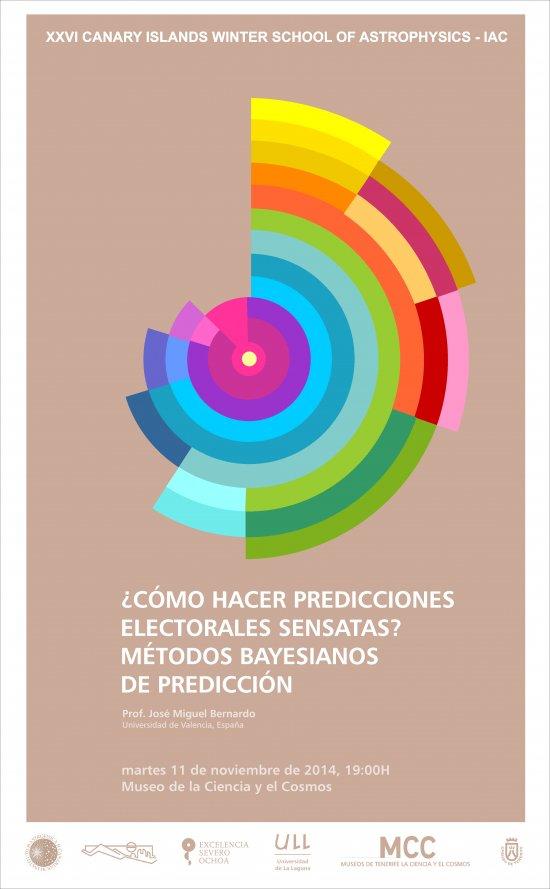In the Spanish electoral systems, in the General Elections as well as in the autonomous regional and municipal elections the politically relevant result is not the percentage of votes obtained by each party, but the number of deputies, or councillors obtained when the electoral law has been applied. This is performed using an algorithm which takes into account the restrictions on the mínimum percentage of votes needed to obtain a seat (generally between 3% and 8%), and the mechanism to assign the seats given the percentage of votes for each party (the d’Hondt Law). A valid electoral prediction should therefore be in the form of a distribution of probabilities over the possible assignments of seats or of councilors among the parties which stand in the elections.
Using the method of Bayesian statistics, which is the subject of the XXVI Winter School of the Astrophysics Institute of the Canaries (IAC), which is taking place at the moment in La Laguna, this solution can be obtained in the form of a mathematical transformation of the predictions based on the percentages of votes which each party can expect to obtain using the information available at the time the prediction is made. Conventional statistics do not offer a satisfactory solution to this problem. Putting into practice satisfactory systems of electoral prediction also require the use of a very carefully chosen sample which can be designed using techniques from information theory. Without going into technical detail, the mathematician José Miguel Bernardo, Professor of Statistics at the University of Valencia, and invited lecturer at the IAC will give a lecture (just in Spanish) tomorrow, Tuesday 11th November at 19.00 o’clock in the Museum of Science and the Cosmos, belonging to Museums of Tenerife, where he will describe a procedure which allows us to make satisfactory predictions of election results, illustrating his talk with examples and anecdotes from its past use in real elections.
Interview with José Miguel Bernardo, and photo at: http://www.iac.es/divulgacion.php?op1=16&op2=402&id=70&lang=en



